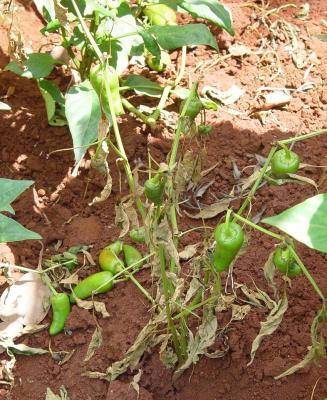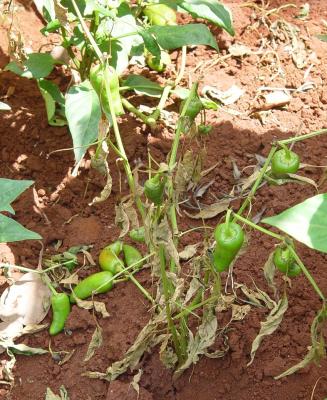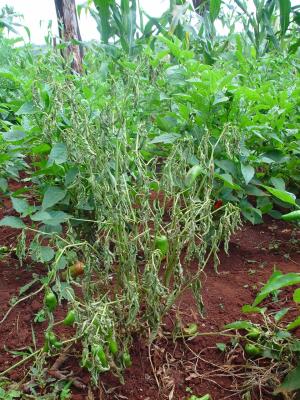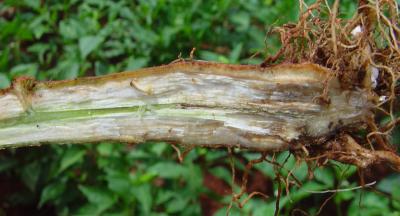Featured Photo

Other Photos



feaured_photo_co
A.M. Varela, icipe
Is this a Minor Pest?
Yes
Minor Pest Title
Bacterial wilt (<i>Ralstonia solanacearum</i>)
Minor Pest Description
The disease occurs in scattered plants or groups of plants in the field. Characteristic symptom is wilting of the entire plant with no leaf yellowing. Cross sections cut from roots and lower stems of diseased plants exude milky streams of bacteria from the vascular system when suspended in water. The bacteria have a wide host range and can survive in the soil for long periods.
The disease is favoured by wet, warm conditions. Peppers are not as susceptible as eggplants, potatoes, tobacco or tomatoes. Rotation is not effective as the pathogen can survive for a long period - several years - in the soil and also attack a wide range of crops and solanaceous weeds.
Minor Pest What to do.
- Plant varieties that are tolerant / resistant, if available.
- Do not grow peppers in soil where bacterial wilt has occurred.
- Remove wilted plants from the field to reduce spread of the disease from plant to plant.
- Control root-knot nematodes since they could facilitate infection and spread of bacterial wilt.
- Soil amendments (organic manures) can suppress bacterial wilt pathogen in the soil.
- Rotation is of limited value since the disease has a wide host range, but still it is recommended to avoid continuous planting of solanaceous crops.
Minor Pest Position
5
Minor Pest Firstcontent
119
Pest Type
bacterial
Custom1
Common names; bacterial wilt, brown rot, moko disease (banana), slime disease (potato), southern bacterial blight (tomato), seedling rot
Other Crops
Tobacco
Host Plants
Peppers (Revised)
Featured Image
PH Pests Media Gallery
